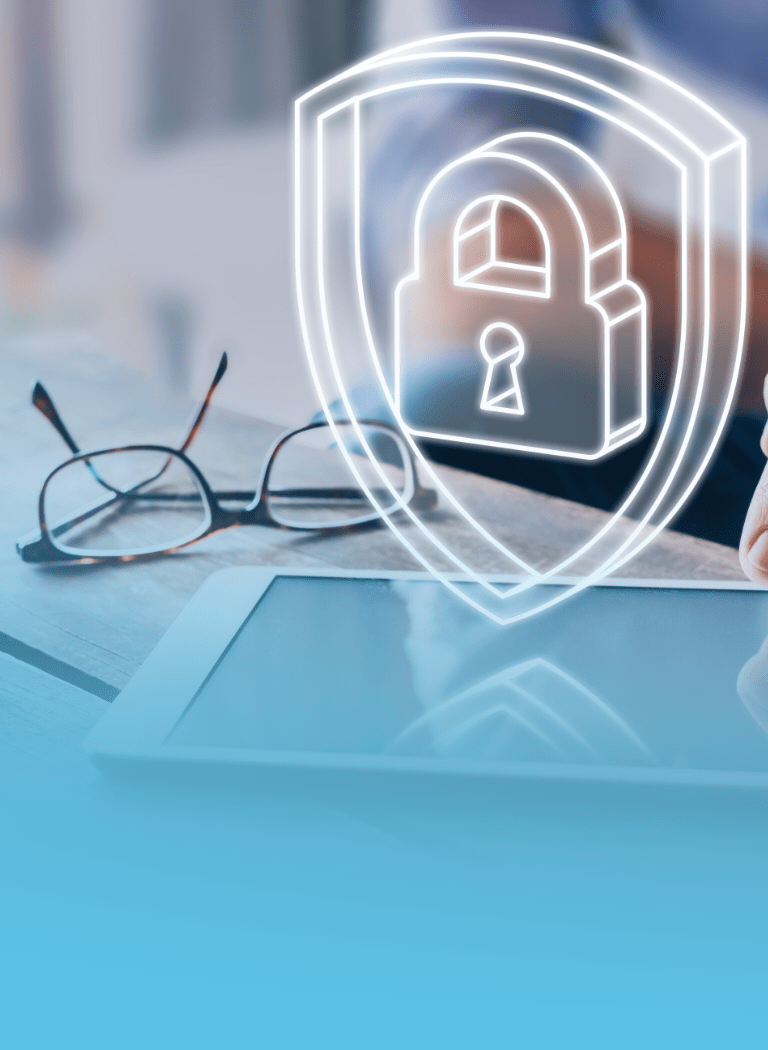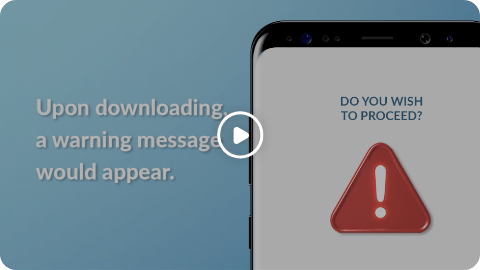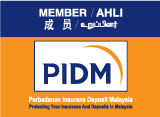

Anyone can fall for a scam. It is not a reflection of your intelligence
but if you educate yourself to recognise what to look out for, you’ll be
less likely to fall for the traps. Read from our handy tips below to
learn the actions you can take to protect yourself and others.
Credit or debit cards/-i are easy to use - and easy to steal.
Here are a number of steps you can take to make sure your cards are safe.
Safeguard your credit card against fraud
Check your credit card transactions
Key in the Bank’s URL website directly into the web browser to ensure you are in the bank’s legitimate website.
Make sure the site address begins with “https”. Always look for a padlock symbol on the status bar of your browser. Before carrying out online banking transactions, always use a personal firewall and ensure that your computer/device’s anti-virus software is updated.
Do not share your usernames and passwords.
Do not verify or reveal your username, passwords or PIN via the hyperlink in an email or over the phone.
Do not access your bank account from unprotected PCs in public places such as internet cafes.
Also avoid using public access Wi-Fi when accessing your online banking account through your smartphone, laptop or other portable devices. Beware of people watching over your shoulders when you are accessing in public places.
Change your password or PIN regularly.
As a practice, use different passwords for different websites. Avoid using easy-to-guess passwords such as 12345, your birthday, etc and do not store your username, password, or PIN number in your computer or smartphone.
Reconcile your account(s)
Either online or by statements frequently and regularly.
Always log out from your online banking sessions
Do not leave your computer/smartphone unattended when logged in to your online banking account.
Key in the Bank’s URL website directly into the web browser to ensure you are in the bank’s legitimate website.
Make sure the site address begins with “https”. Always look for a padlock symbol on the status bar of your browser. Before carrying out online banking transactions, always use a personal firewall and ensure that your computer/device’s anti-virus software is updated.
Do not access your bank account from unprotected PCs in public places such as internet cafes.
Also avoid using public access Wi-Fi when accessing your online banking account through your smartphone, laptop or other portable devices. Beware of people watching over your shoulders when you are accessing in public places.
Document forgery
How to prevent credit application fraud
Have your debit card ready to go as you approach the ATM.
If you need to search through your purse or wallet, you’ll give criminals chances to catch you off guard.
Check the ATM for a card skimmer.
If the card reader slot feels loose or is of odd color scheme than the bank’s branding, or the keyboard doesn’t feel right (too thick, buttons don’t press easily, etc.), these are often signs that a skimmer is in place.
Use your body to “shield” the ATM keyboard as you enter your PIN.
If someone seems to be lingering behind you, walk away and come back later.
Do not count or visually display any money you received from the ATM.
After taking your money out of the ATM, immediately place the cash in your purse or wallet and count it later.
Always take your receipts or transaction records with you.
This will avoid any of your personal information from falling into the wrong hands.
Bring someone with you when using an ATM.
If you can’t find a buddy, use an ATM that is located in a public area like a mall. You’ll have the video surveillance from both the mall and the bank.
Be aware of your surroundings, particularly at night.
If you see suspicious activities, like a person waiting a few feet away, avoid using that machine and find another in a more public area.
Keep your personal identification number (PIN) just that - personal.
Never write it down or share it with anyone - not even family members. It’s also a good idea to update your PIN number once a year to keep it fresh.
At RHB, we are committed to your online peace of mind.
However, you also play an important role in safeguarding your devices and online information.
What is Malware?
Malware or malicious software is designed to gain access to your computer systems without your consent.
When installed, malware can steal your personal and financial information. Install anti-virus software and the latest security patch on the devices you use to access internet banking app to help prevent malicious threat.
Types of malware
Do not use a jailbroken Apple® iPhone®, rooted Android™ phone or any other mobile devices that has been jailbroken or rooted.
These are techniques which remove important security features built into your device by the mobile operating system manufacturers.

This is a modal window.
Beginning of dialog window. Escape will cancel and close the window.
End of dialog window.
A malware blocks access to the infected computer system/files through encryption.
A type of malware that restricts access. After restricting access, the malware operator then demands that the user pays a ransom to remove the access restriction.
Scenario of ransomware
While you were browsing a new website, you clicked on an advertisement banner. Unknowing to you, you had downloaded a malware to your computer. A few days later, you started noticing files having different extensions that could not be opened. Soon, you realised your computer was operating abnormally and your genuine files were no longer accessible. You were a potential victim of ransomware.
Modus Operandi
Spam Emails
Clicking on malicious links or opening compromised email attachments.
Malvertisement
Malicious advertisements embedded in websites.
Instant Messaging (IM)
Links in IM messages e.g. Whatsapp, Telegram, etc.
Drive-by Attack
Accidental/Unknown downloads from visiting a compromised website.
Do not use a jailbroken Apple® iPhone®, rooted Android™ phone or any other mobile devices that has been jailbroken or rooted.
These are techniques which remove important security features built into your device by the mobile operating system manufacturers.
Dos and Don’ts to prevent you from becoming a victim
| DOs | DON'Ts |
|---|---|
| For your personal banking credential, always use a strong password. Use 8-16 alphanumeric and special character/s. | Do not use easily identifiable number sequences. For example, NRIC, date of birth or vehicle number as a PIN for ATM or credit cards, or as an online banking password. |
| For card transactions, to complete your transaction, always check your OTP message and do not share the OTP with any third parties. | Do not respond to any requests for your banking credentials through phone, SMS or social media channels. |
| Always key in the bank's URL or check to see if it is a genuine site with “padlock” icon. | Do not download any links or APK files to your laptop and mobile. |
| Notify the bank in advance to update your latest contact details. e.g. corresponding address, mobile number and email address. | Do not submit your loan/financing documents to loan/financing syndicates/third parties who guarantee approval in exchange for a fee. |
| For online banking, to complete your transaction, always check the amount and payee name before approving the transaction via secure plus. | Do not send your personal and card information over any communication mediums e.g. emails, SMSs, WhatsApp etc. |
| Do ensure that your security phrase is correct before you enter your password. | |
| Monitor your online banking transaction history and credit card statement regularly for suspicious transactions and immediately report to your bank if there is an unauthorised transaction. |
INVESTIGATION REQUIREMENTS – Ensuring Fair Treatment For Victims of Unauthorized E-Banking Transactions
Contact Us immediately if you believe your banking information is compromised
or there has been an unauthorised transaction on your account.












You are about to enter a third party website and RHB Banking Group's privacy policy will cease to apply.
This link is provided for your convenience only, and shall not be considered or construed as an endorsement or verification of such linked website or its contents by RHB Banking Group.
RHB Banking Group also makes no warranties as to the status of this link or information contained in the website you are about to access.
PIDM Membership Representation

You are about to enter a third party website and RHB Banking Group's privacy policy will cease to apply.
This link is provided for your convenience only, and shall not be considered or construed as an endorsement or verification of such linked website or its contents by RHB Banking Group.
RHB Banking Group also makes no warranties as to the status of this link or information contained in the website you are about to access.
We used cookies to improve your experience on our website. By continuing to use our website and/or accepting this message, you agree to our use of cookies. Please refer to our Privacy Policy for more information.